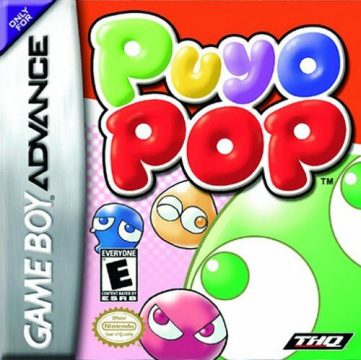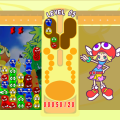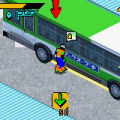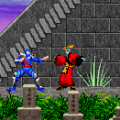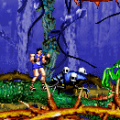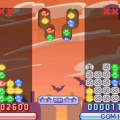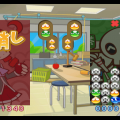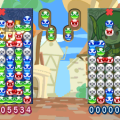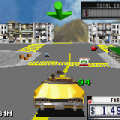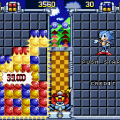Although the Puyo series was quite a large success, Compile wasn’t able to keep itself together. Though this would usually mean the end of a franchise, this was where Compile’s relationship with Sega came into play. Although the company began to restructure before the release of Puyo Puyo~n (1998, to be more precise) and was finally unable to make any more Puyo games after the release of Puyo Puyo Box, Compile sold the rights of the series to Sega, allowing them to create games in the series after Compile finally went bankrupt in 2002.
Sega’s first game in the series, Minna de Puyo Puyo (Puyo Pop, in the international release), isn’t a game in the main series, but rather considered as a side game. In comparison to all of the other games, main series or not, it’s a pretty simple game, and doesn’t have much to offer, especially since there’s not much innovation to be had in this game.
Released on the GBA only, Minna de Puyo Puyo’s main draw is its story mode. The plot revolves around Satan splitting up five gold runes, and then giving them to a few individuals. He then sets up a contest, something that Arle is forced to join after Carbuncle runs off. What’s special about this game isn’t about the story itself, it’s about how it’s handled. The story mode is split off into five courses, each increasing in difficulty and consisting of a few opponents to beat, yet all contributing to a single story. This was a deviation from the previous method of telling the story, in which there were only around three courses to choose from, each relating to a difficulty level and having their own set stories that didn’t interact with each other. Each course of the game borrows from Puyo Puyo~n’s trick of having a certain gimmick, such as starting off with point puyo on the field. Unfortunately, on its own, the story mode is rather short, and can easily be completed in one sitting. In order to increase the longevity of the game, however, a slight gimmick is introduced in the form of a trading quest; after completing the main game, completing each course in reverse order rewards you with an item that gets traded down to the next course and so on. Completing this unlocks another, final course.
Unfortunately, even with this, the game is quite short, as there’s not much to do outside of story mode. There are the traditional endless, mission, and multiplayer modes, though something interesting is that the game supports a four player mode through the use of link cables. There’s also an option to switch between English and Japanese. All in all, the game isn’t exactly one in the series that you should feel compelled to play, as it lacks a lot, but it isn’t necessarily a bad game.

